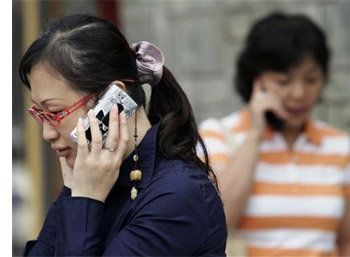China rolls out 3G mobile network for trials
 April 3 – After years of delays and unsatisfactory results, China finally rolled out its home-grown 3G or third generation mobile phone network on Tuesday.
April 3 – After years of delays and unsatisfactory results, China finally rolled out its home-grown 3G or third generation mobile phone network on Tuesday.
Technically tagged TD-SCDMA (Time-Division-Synchronous Division Multiple Access), the network was released in eight major cities – Beijing, Shanghai, Guangzhou, Shenzhen, Shenyang, Qinhuangdao, Tianjin, and Xiamen by State-owned China Mobile to a few select customers.
Third generation mobile phone networks are said to be to the telecom industry what broadband was to the internet; revolutionary. They will offer faster download speeds, instant e-mail, web browsing and real time gaming.
The technology was met with a lukewarm response in most cities Xinhua reported. A limited variety of models and the public’s unfamiliarity with the 3G technology affected the first day of the commercial trial, industry sources said. In Shanghai, there were only two main outlets where a 3G phone could be purchased.
As the technology requires the user to buy a new handset, phones costing RMB1,800 to 3,800 made by six mostly local firms, including ZTE, Samsung, Lenovo, Hisense, CECT and LG, were on display. Additionally to activate the Chinese 3G technology, callers need to pay RMB20 for the SIM card with a telephone number the carries the prefix 157 then they must top up the SIM card by at least RMB100 to activate the service.
“I think the technology is pretty cool, but the phone is definitely ugly” commented Wu Xiaohong, a website editor in the South China Morning Post. “I don’t think an immature technology is really worth that much.”
The Chinese government has decided to develop and deploy their own telecom technology ahead of the Olympic Games in a bid to give local mobile technology manufacturers a step up.
China has developed TD-SCDMA at a time when two rival mobile technologies are already competing head to head for greater global market share. CDMA mobile technology dominates America, Korea, Japan and parts of India and China, while GSM dominates Europe, Australia and most of Asia and the Middle East.
- Previous Article Asian Development Bank: Chinese economy to slow to 10 percent in 2008
- Next Article Aid, ideology and atomic bombs: China’s complicated relationship with North Korea









